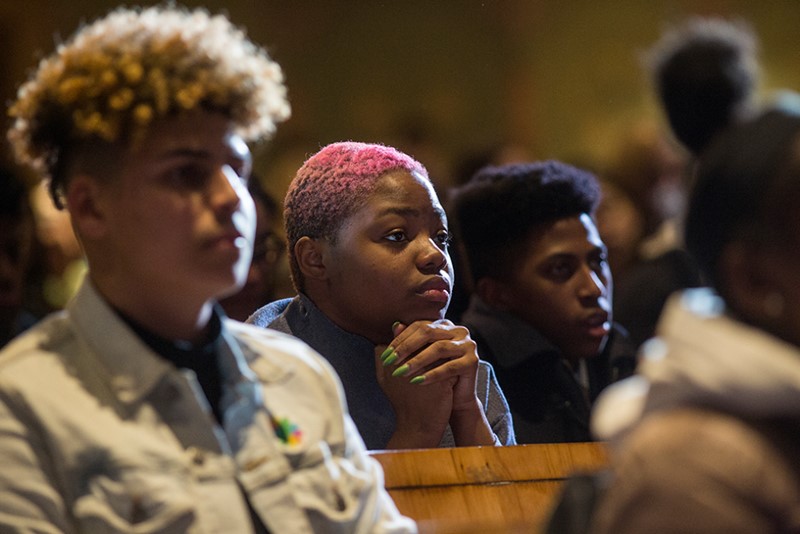
The nationwide uprisings against police brutality in the past few months have led to a significant shift in conversations and attitudes about racial inequities in America. While it may be premature to say that these conversations signal an awakening, books about race and racism are topping bestseller lists; millions of posts on social media are proclaiming that Black Lives Matter; and Americans in at least 1,700 communities across all 50 states and Washington, D.C., are marching in the streets to protest generations of racial injustice.
The killings of Ahmaud Arbery, Breonna Taylor, George Floyd, Rayshard Brooks, and others have galvanized calls and increased support for dramatic changes to policing and criminal justice policies. Many Black leaders and Black-led groups in communities across the country have been working for these changes for decades. It is critically important for newly energized allies, especially those who are not Black, to go beyond hashtag activism and enter this work by listening to the voices of community members and educating themselves on the history, causes, and consequences of systemic racism in the United States.
Allies should also work with Black communities to support efforts to combat structural racism in education, housing, and other social policies. Their opposition, silence, or lack of engagement in these efforts can contribute to the perpetuation of inequities and further limit access to opportunities for communities that are Black, Indigenous, and people of color (BIPOC). Because systemic racism in education is a root cause of so many other inequities that BIPOC face, it is critical that allies stand shoulder to shoulder with these communities in calling for large-scale changes to the U.S. education system. Particularly because education is often thought of as a local concern or personal matter for parents and families, it is especially important that allies lift their voices for BIPOC communities to ensure that the call for change is unified and focused. This column details three ways in which allies should leverage their influence and power beyond social media to combat systemic racism in education.
1. Advocate for equitable funding
Money matters in education, with multiple studies showing that increasing funding improves outcomes while cuts hurt them. Still, the United States’ school funding systems remain inequitable, disproportionately shortchanging BIPOC students. More than 35 percent of public school revenue comes from property taxes that favor and stabilize funding in wealthier areas, while other communities must rely on more volatile state revenues. This is one reason why predominantly nonwhite school districts across the country annually receive $23 billion less than their predominantly white counterparts.
Black, Indigenous, and other non-Black students of color attend schools that are statistically more likely to be under-resourced, outdated, and in many cases hazardous to their health. Last month, the U.S. Government Accountability Office released a reportthat estimated more than half of the nation’s public school districts needed to update or entirely replace multiple systems, such as HVAC or plumbing, in their school buildings—and many of these districts are concentrated in high-poverty areas. If left unaddressed, these infrastructure problems could pose significant air quality issues, contribute to exacerbating asthma and chronic absenteeism in students, and negatively affect students’ academic performance. Notably, higher-poverty districts have less local revenue than low-poverty districts to fund the capital construction costs of addressing these kinds of repairs.
While state funding offsets some of these local disparities, it is not enough. As a result of the Great Recession of 2008, most states significantly cut their education funding—an action shown to have disproportionately affected higher-poverty districts. A number of states still had not restored their education funding to prerecession levels years after the recession ended. Now, in the wake of the COVID-19 crisis, states are once again forecasting massive cuts to their education budgets because of historic shortfalls in income and sales tax revenue.
Allies have a role to play in ensuring that states use stabilization funds—federal funding allocated to states for education purposes to offset their depleted revenue—to prevent these cuts. They should call for increased investments in education as well as fairer and more transparent funding policies at the state and local levels to make sure that capital projects, programs, and overall spending are equitable in schools that serve large numbers of BIPOC students. Organizations such as Gwinnett StoPP and other members of PEER Partners, as well as the Maryland Fair Funding Coalition, include BIPOC-led organizations actively working to advance these efforts.
2. Advocate for less policing and surveillance of students
Within six months of the deadly 2018 school shooting in Parkland, Florida, legislatures in 26 states allocated nearly $960 million for security upgrades and the addition of police officers to school campuses. While gun violence in schools must be prevented, there is evidence that increased policing and surveillance do not effectively address the threat of gun violence in schools. Black students in particular feel less safe in the presence of police and are more likely to be policed than they are to be protected.
According to data from the U.S. Department of Education’s Office for Civil Rights, Black, Hispanic male, and American Indian students face higher rates of school disciplinary consequences such as suspension and expulsion than white students, and they are also subject to more interactions with police in schools in the form of contraband sweeps, interrogations, physical restraints, and arrests. Black students are also more likely to be subjected to social media surveillance and the use of biased artificial intelligence and facial recognition technology.
Additionally, recent data show that approximately 1.7 million students attend schools with police officers but no counselors; 3 million students attend schools with police but no nurses; 6 million students attend schools with police but no psychologist; and 10 million students attend schools with police but no social workers. Middle and high schools with higher concentrations of law enforcement officers compared with mental health staff are more likely to be in areas that serve primarily Black students.
Allies could join one of the many youth- and parent-led BIPOC groups that are part of the Dignity in Schools Campaign to advocate for more counselors, nurses, and social workers in schools instead of increased police presence and security. They should also demand transparency about school discipline data and policies in their local communities to ensure that students’ civil rights are not being violated.
3. Advocate to end de-facto segregation through school and district boundaries
Sixty-six years ago, the unanimous Brown v. Board of Education decision declared school segregation unconstitutional, but many public districts and schools remain segregated by race and socioeconomic status today. In many cases, this was an intentional result of the design of school district and neighborhood school assignment boundaries. Since 2000, for example, 128 communities in states from Maine to Utah have attempted to secede from larger school districts. The secession of wealthier and whiter areas takes local tax revenue from districts and increases the number of schools that are racially segregated.
Debates about opportunity hoarding are not limited to particular regions or states. Even in areas that champion their diversity, such as Montgomery County, Maryland—which borders Washington, D.C.—the mere idea of analyzing school attendance boundaries or reassignment plans has caused an uproar. White and Asian parents have protested that any changes to school boundaries that would reduce high concentrations of students from low-income families is unfair to parents who have “worked hard” to live in more affluent neighborhoods. In Howard County, Maryland, a superintendent’s plan to reassign students to alleviate crowding and create greater socioeconomic equity resulted in fervent opposition and even a death threat. In addition, the use of screening tests and biased admissions practices for gifted and talented programs in elementary grades and selective middle and high schools have historically woefully underrepresented BIPOC students.
Allies should join with their BIPOC neighbors and show up to their local school board meetings to push for school boundaries and selection criteria that are designed with a race-equity lens. These reforms would ensure that students are not locked out of opportunities based on where they live. In Arlington, Virginia, wealthy and white parents are working with Latinx parents to protest the move of a dual-language immersion school to an area that would be more difficult for Latinx families to attend. Likewise, in Brooklyn, New York, parents of all backgrounds worked together to eliminate gifted tracking programs in favor of enrichment programs available to all students. Allies should also call on their state legislatures and local school boards to create policies that ensure equitable access to rigorous and advanced coursework for all students.
What lies ahead
Black communities face injustices that extend beyond the horrifying examples of police killings that have led to calls for big changes to police funding, structures, and policies. Combating the pervasive and deeply rooted forms of systemic racism will require allies—including those in affluent communities—to speak up and speak out.
From the lack of adequate mental health services to inequitable access to advanced and rigorous coursework to unhealthy school buildings, education systems disproportionately fail Black students. Allies can play a role in breaking down these barriers by pushing for change at both state capitols and local school board meetings. They must be vocally supportive of education funding systems that target dollars where they are needed most in order to ensure that opportunities are not restricted based on where people live.
Education budgets are statements of values and should reflect a material commitment to racial equity in schools, not just lip service to diversity. BIPOC students simply cannot afford spending cuts, particularly at a time when they are disproportionately experiencing the worst effects of COVID-19, which will require additional supports and services. Rather than enhanced police and security theater, Black students need more voices calling for equitable resources in schools. Allies must support equitable and diverse schools that improve access to opportunities for BIPOC students and students from low-income families. Parents from affluent communities would not stay silent if their children’s public schools were not equitably funded, so they should not remain silent for other children.
Roby Chatterji is a senior policy analyst for K-12 Education at the Center for American Progress.


